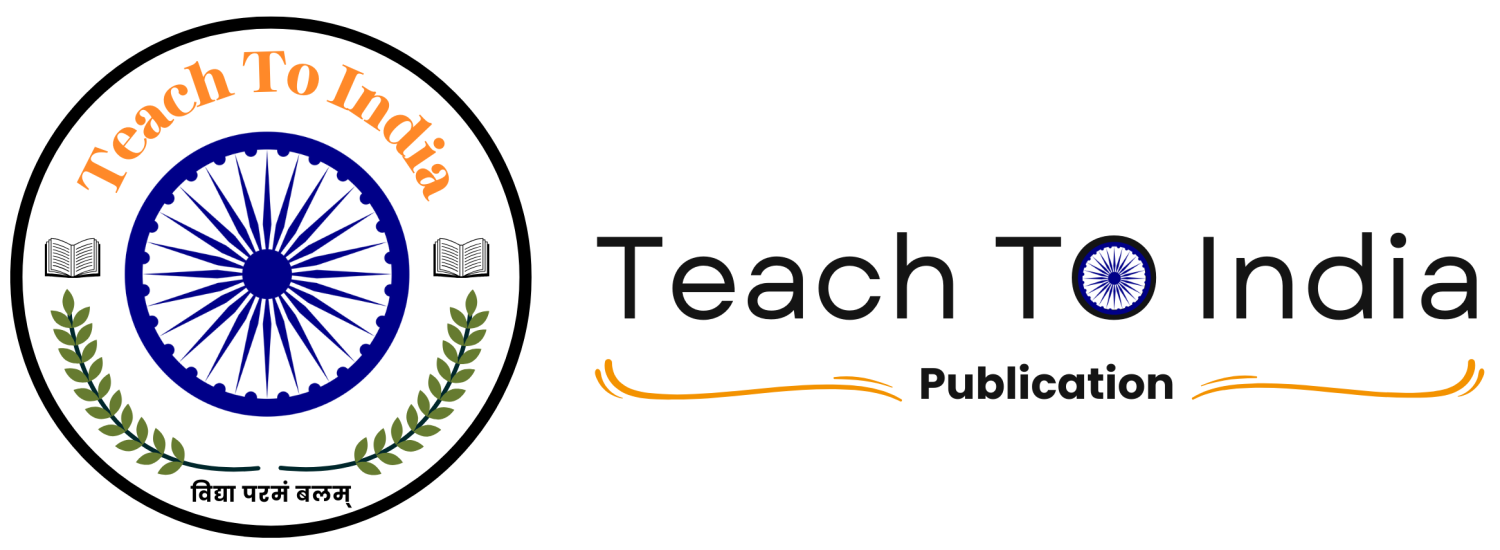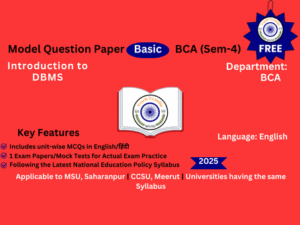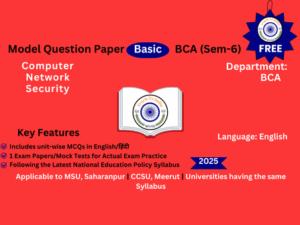Software Engineering – Adv
- Description
- Curriculum
- Reviews

Model Question Paper
Software Engineering
Key Features
- Unit-wise Short Notes
Each unit includes a summary in both languages, making revision faster and more effective. -
Extensive MCQ Practice
1500+ MCQ Practice Questions: This comprehensive question bank includes 1500+ multiple-choice questions (MCQs). Each unit contains approximately 150 MCQs covering a wide range of cognitive levels such as remembering, understanding, application, and analysis. -
Exam Practice Paper with Mock Tests
Includes three full-length mock tests for real exam practice. One mock test is free for students to assess the quality of our question paper. -
Latest Syllabus as per NEP
The syllabus aligns with the latest National Education Policy (NEP) and follows the exam patterns of MSU, CCSU, and other universities following the NEP. -
Designed by Experts
This question bank has been meticulously prepared by subject matter experts to ensure accuracy and relevance.
Why Choose This Model Paper?
- Complete Exam Preparation: Unit-wise summaries, MCQ practice, and mock tests provide a complete study solution.
-
Latest NEP-Based Pattern: Ensures compliance with the latest university exam structure.
|
Program Class: Certificate/ BCA |
Year: II |
Semester: IV |
||
|
Subject: BCA |
||||
|
Course Title: Software Engineering |
||||
|
Credits: 4 |
Core Compulsory |
|||
|
Max. Marks: –25+75 |
Min. Passing Marks: 33 |
|||
|
Unit |
Topics |
|||
|
I |
Software Engineering: Definition and paradigms, A generic view of software engineering. |
|||
|
II |
Requirements Analysis: Statement of system scope, isolation of top level processes and entitles and their allocation to physical elements, refinement and review. Analyzing a problem, creating a software specification document, review for correctness, consistency, and completeness. |
|||
|
III |
Designing Software Solutions: Refining the software Specification; Application of fundamental design concept for data, architectural and procedural designs using software blue print methodology and object oriented design paradigm; Creating design document: Review of conformance to software requirements and quality. |
|||
|
IV |
Software Implementation: Relationship between design and implementation, Implementation issues and programming support environment, Coding the procedural design, Good coding style and review of correctness and readability. |
|||
|
V |
Software Maintenance: Maintenance as part of software evaluation, reasons for maintenance, types of maintenance (Perceptive, adoptive, corrective), designing for maintainability, techniques for maintenance. |
|||
|
VI |
Comprehensive examples using available software platforms/case tools, Configuration Management. |
|||
-
1Unit 1: Summary - Software Engineering
-
2Unit 1: MCQs - Software Engineering – Adv
-
3Unit 2: Summary - Software Engineering
-
4Unit 2: MCQs - Software Engineering – Adv
-
5Unit 3: Summary - Software Engineering
-
6Unit 3: MCQs - Software Engineering – Adv
-
7Unit 4: Summary - Software Engineering
-
8Unit 4: MCQs - Software Engineering – Adv
-
9Unit 5: Summary - Software Engineering
-
10Unit 5: MCQs - Software Engineering – Adv
-
11Unit 6: Summary - Software Engineering
-
12Unit 6: MCQs - Software Engineering – Adv







